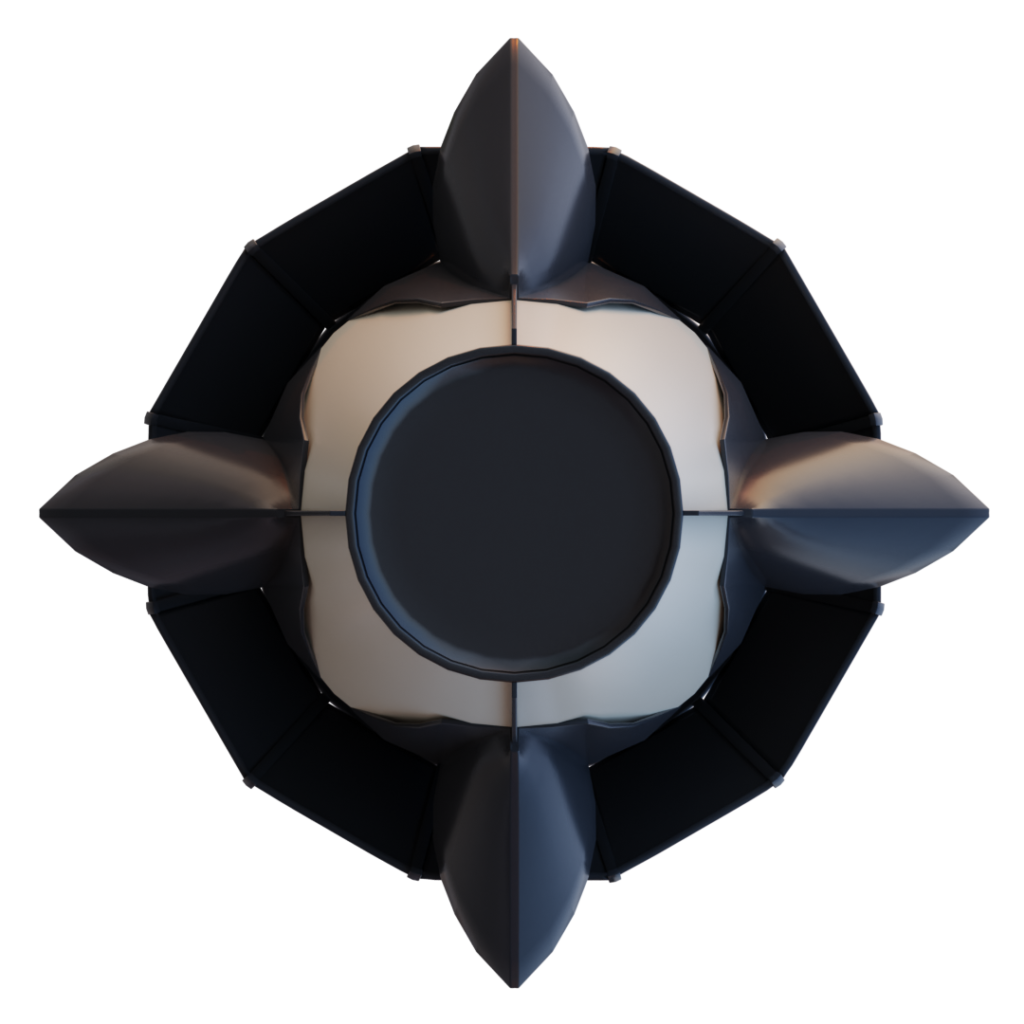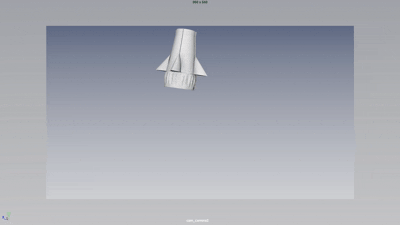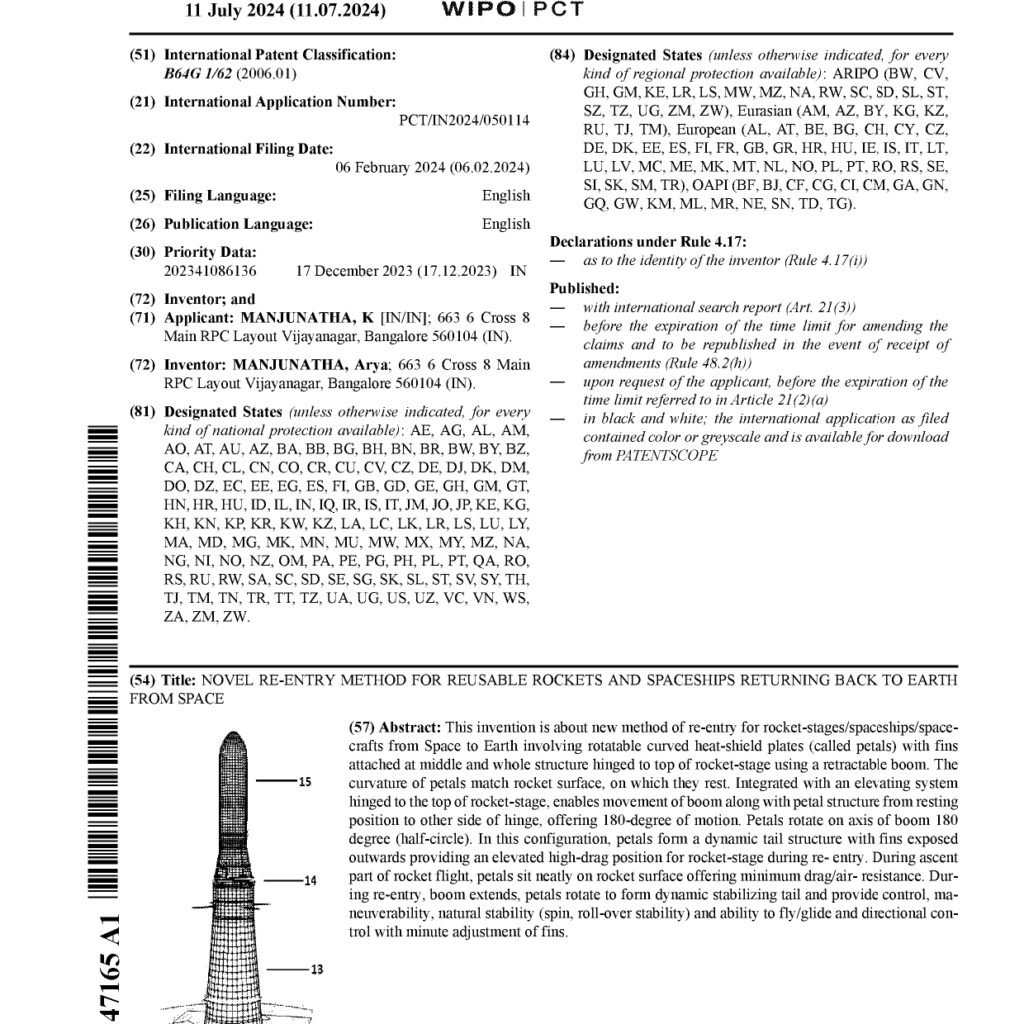

Introducing the World’s Fourth Re-Entry Method for Spacecraft
Our groundbreaking re-entry system is designed to redefine the safety, efficiency, and reliability of spacecraft returning to Earth. This innovative approach overcomes limitations of traditional re-entry methods, offering a robust solution for future space exploration.
As of today, there are three established methods for spacecraft re-entry from orbit to Earth:
The Soyuz Method: This traditional approach involves a blunt-body capsule design coupled with parachutes. The capsule slows down using atmospheric drag, and parachutes deploy to ensure a safe landing.
The NASA Space Shuttle Method: The space shuttle utilized a winged, glider-like design that relied on controlled descent and aerodynamic lift for re-entry. Aero-braking was achieved using the shuttle’s belly to dissipate heat and reduce speed, followed by a runway landing.
The SpaceX Starship Method: SpaceX’s Starship employs a unique aero-braking technique, using its flat belly to generate drag during re-entry, similar to the NASA shuttle. However, in the final moments of descent, the spacecraft flips vertically by firing its engines and lands using its rocket engines, achieving precision and reusability.
Re Entry aided by petals!
This invention introduces a novel method for the re-entry of rocket stages, spaceships, or spacecraft from space into Earth’s atmosphere. The design features rotatable curved heat shield plates (referred to as petals), equipped with fins at their center and hinged to the top of the rocket stage using a retractable boom.
The curvature of the heat shield plates (petals) is precisely matched to the rocket’s surface, whether conical or cylindrical, allowing them to rest flush against the rocket body during ascent. An integrated elevating system, also hinged to the rocket stage’s top (or an appropriate location for spaceships), enables the boom and petal assembly to move from its resting position to the opposite side of the hinge, providing a full range of motion of up to 180 degrees.
In addition, the petals can rotate around the axis of the boom up to 180 degrees (a half-circle). In this configuration, the petals form a dynamic tail structure with the fins oriented outward. This tail structure provides a high-drag aerodynamic profile during the spacecraft’s atmospheric re-entry phase.

Operational Phases
Ascent Phase: During the launch and ascent from Earth, the petals remain neatly folded along the rocket’s surface, minimizing drag and air resistance.
Re-Entry Phase:
- The boom extends upward, and the petals rotate into a half-circle configuration, creating a tail structure.
- This tail significantly increases air resistance through aero-braking, helping to decelerate the spacecraft.
- The petals and fins serve as a stabilizing tail, improving control and maneuverability
Key Advantages
- Natural Stability: The tail configuration enhances spin stability, roll stability, and directional control during re-entry.
- Aerodynamic Control: The fins provide fine-tuned adjustments for directional stability and gliding in the thin upper atmosphere.
- Efficiency: The design minimizes drag during ascent and maximizes braking during re-entry, optimizing performance for both phases.
This innovative configuration ensures a safer, more stable, and controlled re-entry for rocket stages, spaceships, or spacecraft, marking a significant advancement in re-entry technology.

Applications of the Novel Re-Entry Method
- Crewed Missions: Ensures astronaut safety with reinforced protection and smooth deceleration during landing.
- Satellite and Cargo Recovery: Enables efficient retrieval of payloads, reducing overall mission costs.
- Deep Space Exploration: Supports long-term missions by ensuring the safe return of exploration modules.
Lorem ipsum dolor sit amet, consectetur adipiscing elit. Ut elit tellus, luctus nec ullamcorper mattis, pulvinar dapibus leo.


